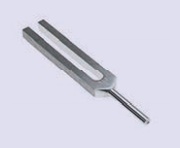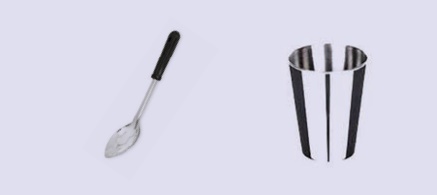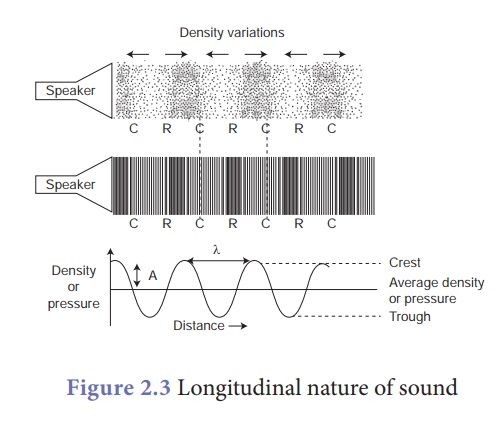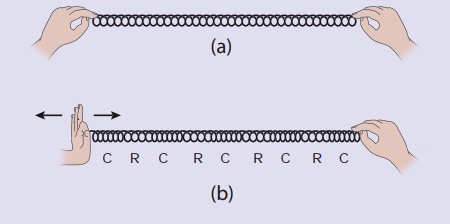Chapter: 9th Science : Sound
Propagation of sound waves
Propagation of sound waves
Activity 1
Take a tuning fork and strike its prongs on a rubber pad. Bring it near your ear. Do you hear any sound? Now touch the tuning fork with your finger. What do you feel? Do you feel vibrations?

Activity 2
Take a steel tumbler and fill it with water. Take a spoon and gently tap the tumbler. What do you observe? Can you hear some sound? Do you see any vibration on the surface of the water?

1. Sound needs a medium for Propagation
In the activities given
above we saw that sound needs a material medium like air, water, steel etc.,
for its propagation. It cannot travel through vacuum. This can be demonstrated
by the Bell – Jar experiment.
An electric bell and an
airtight glass jar are taken. The electric bell is suspended inside the
airtight jar. The jar is connected to a vacuum pump, as shown in Figure 2.1. If
the bell is made to ring, we will be able to hear the sound of the bell. Now
when the jar is evacuated with the vacuum pump, the air in the jar is pumped
out gradually and the sound becomes feebler and feebler. We will not hear any
sound,if the air is fully removed (if the jar has vacuum).

2. Sound is a wave
Sound moves from the
point of generation to the ear of the listener through a medium. When an object
vibrates, it sets the particles of the medium around to vibrate. But, the
vibrating particles do not travel all the way from the vibrating object to the
ear. A particle of the medium in contact with the vibrating object is displaced
from its equilibrium position. It then exerts a force on an adjacent particle.
As a result of which the adjacent particle gets displaced from its position of
rest. After displacing the adjacent particle the first particle comes back to
its original position. This process continues in the medium till the sound
reaches our ears. It is to be noted that only the disturbance created by a
source of sound travels through the medium and not the particles of the medium.
All the particles of the medium restrict themselves with only a small to and
fro motion called vibration which enables the disturbance to be carried
forward. This disturbance which is carried forward in a medium is called wave.
3. Longitudinal nature of sound waves
In the above activity
you noticed that in some parts of the coil, the turns are closer together.
These are regions of compressions. In between these regions of compressions we
have regions where the coil turns are far apart called rarefactions. As the
coil oscillates, the compressions and rarefactions move along the coil. The
wave that propagates with compressions and rarefactions are called longitudinal
waves. In longitudinal waves the particles of the medium move to and fro along
the direction of propagation of the wave.
Sound is also a
longitudinal wave. Sound can travel only when there are particles which can be
compressed and rarefied. Compressions are the regions where particles are
crowded together. Rarefactions are the regions of low pressure where particles
are spread apart. A sound wave is an example of a longitudinal mechanical wave.
Figure 2.3 represents the longitudinal nature of sound wave in the medium.



Related Topics